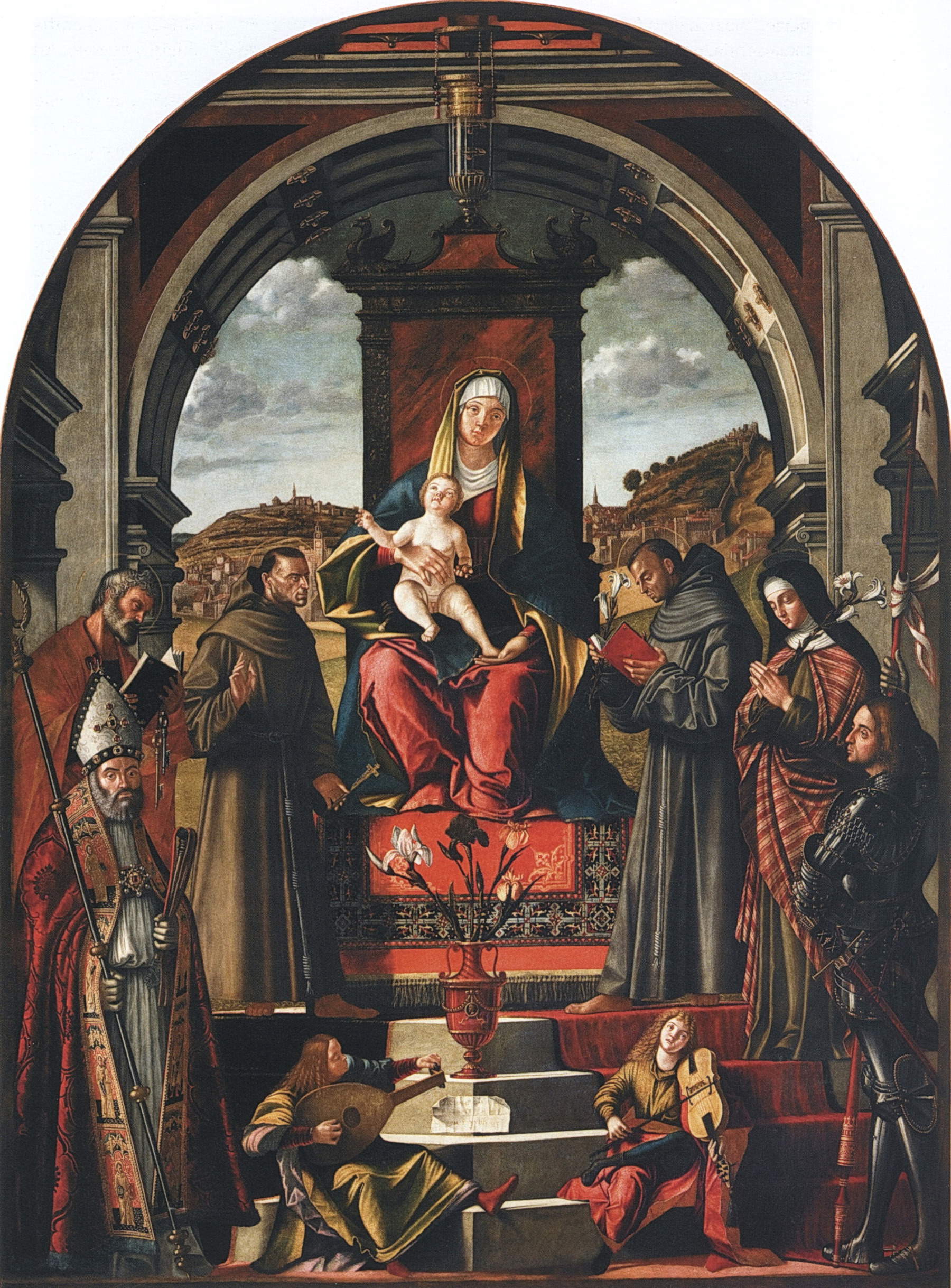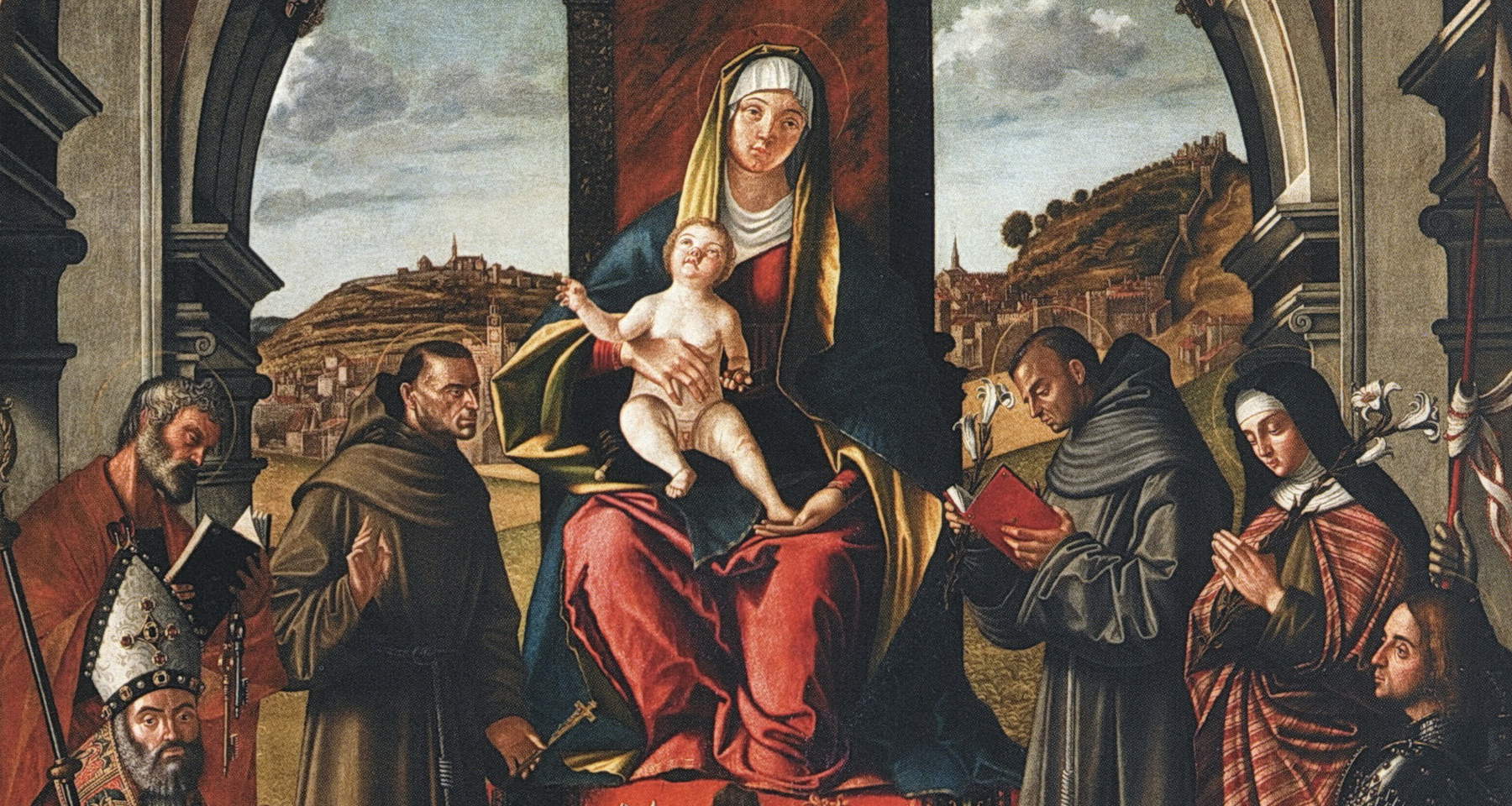Vittore Carpaccio ’s Madonna and Child Altarpiece returns to Slovenia, to the church of St. Francis in Piran, for which it was originally made in 1518. The work, which depicts the Virgin and Child with Saints Ambrose, Peter, Francis, Anthony, Clare, George and two musician angels, is now kept in the Museo Antoniano of the Basilica del Santo in Padua, but it was with the beginning of the conflict in 1940 that the painting by Venetian painter Vittore Carpaccio (Venice, c. 1465 - Koper, 1526) was moved from Piran for security reasons. Piran then belonged to the Religious Province of the Saint, and moving the altarpiece from the church of St. Francis was part of the protection initiatives promoted by the Italian General Directorate of Antiquities and Fine Arts to safeguard the artistic heritage threatened by the war. On that occasion, Count Leonardo Manin made available his villa in Passariano di Codroipo (Udine), which was turned into a repository for works of art from Friuli, Venezia Giulia and Istria. Here the altarpiece remained for three years before being moved again.
After the armistice in September 1943, the political situation made the Villa Manin repository insecure, and the works were returned to the rightful owners who requested them. With Piran, however, it was not possible to communicate: the friars had been arrested by the SS and locked up in Trieste prisons. The interlocutor therefore became Padua, through the provincial minister Father Andrea Eccher. On October 29, 1943, Carpaccio’s altarpiece was returned and brought, in all probability, directly to the convent of the Saint. It remained in the convent’s storerooms, safeguarded but not visible. In 1995 the new Antonian Museum was opened: the idea was at the same time to give visibility to Carpaccio’s work and to urge the Italian and Slovenian state bodies to solve the problems that prevented the painting’s return. Precisely in the years of the opening of the Museum, the community of Paduan friars, seeing that the Slovenian government had begun the paperwork for the return of the Piran complex to the Slovenian Religious Province (after it had been nationalized by the Yugoslav government), began a dialogue with the Italian government, with the request, which was later reiterated, to be able to return Carpaccio’s altarpiece to Piran.
Meanwhile, the altarpiece was restored and then displayed in 2000 alongside the series of altarpieces from the basilica’s radial chapels. The work was also valorized through various activities and through two conferences; it subsequently had an inspection and routine maintenance intervention on the occasion of its exhibition at the Vittore Carpaccio exhibition. Paintings and Drawings (Venice, Doge’s Palace, March 18-June 18, 2023). An exhibition that further sanctioned the importance of the Piran altarpiece in the critical history of Carpaccio, which in the last two decades has expressed a marked revaluation of works from the late phase of the painter’s activity, of which the painting is an illustrious example.
The return to its original place therefore represents an act of considerable importance, forcibly desired by the Italian Province of St. Anthony of Padua of the Friars Minor Conventual and the Antonian Museum. The coincidence with the official visit of the President of the Italian Republic Sergio Mattarella to Slovenia on September 10 and 11 further underscores the collaboration developed in recent years between scholars, religious and institutions of the two countries.
To celebrate the event, on Saturday, Aug. 30, at 6:30 p.m., in the Sala Studio Teologico of the Pontifical Basilica of St. Anthony of Padua, there will be an event “Salute to Carpaccio,” dedicated to the return of the altarpiece to the church of St. Francis in Piran. Speakers will be Father Antonio Ramina, rector of the Saint, Father Luciano Bertazzo, director of the Centro Studi Antoniani, and scholar Giovanna Baldissin Molli, who will illustrate its history and events, with a subsequent visit to the work in the Antonian Museum. The evening will continue with “Paintings in melody: Carpaccio and Renaissance music of the 16th century,” a concert by the Chamber Choir of the Concentus Musicus Patavinus conducted by maestro Ignacio Vazzoler. Admission is free while seats last.

The Altarpiece of the Madonna and Child, Saints Ambrose, Peter, Francis, Anthony, Clare, George and Two Musician Angels belongs to the final phase of Vittore Carpaccio’s production, a period in which the painter, in a Venice dominated by the emerging talent of Titian, directed his activity primarily toward Istria and other peripheral centers of the Venetian mainland domain.
Intended for an altar in the Franciscan church in Piran (most likely the high altar), the work depicts the Madonna and Child surrounded by Saints Ambrose, Peter, Francis, Anthony, Clare, George, and two musician angels. In the background is a landscape that accurately renders the appearance of sixteenth-century Piran: while moving within a compositional scheme still linked to the fifteenth-century tradition, Carpaccio manages to transcend its boundaries, thanks to carefully studied graphic construction, rigorous perspective balances, highly refined color fields and refined descriptive details.
There are several iconographic elements of note: the realistic view of the Piran landscape; the figure of St. George, patron saint of the city; the inclusion of St. Francis and St. Anthony, whose faces are rendered as true portraits; and the presence, rare in the Veneto area, of St. Ambrose, perhaps linked to the religious ferments and heterodox currents that animated Istria at that time.
The painting was probably conceived for the high altar of the church of St. Francis, attached to the convent of the Friars Minor, and placed above a mensa enriched by a stone aedicule carved in the Venetian Lombard style. In the following centuries, the various remakes of the church profoundly altered the original layout: the present aedicule by Carpaccio, deprived of the altarpiece, was built in 1887 in the Renaissance style, also incorporating parts of the original 16th-century artifact. This chapel, with eclectic forms of neo-Renaissance taste, is located along the northern side of the church and, together with two other adjoining chapels, forms a kind of side aisle. It was in this space that the altarpiece remained placed until the outbreak of World War II.
 |
| Carpaccio's altarpiece returns to Slovenia: it had been moved to Padua in 1943 to save it from war |
Warning: the translation into English of the original Italian article was created using automatic tools. We undertake to review all articles, but we do not guarantee the total absence of inaccuracies in the translation due to the program. You can find the original by clicking on the ITA button. If you find any mistake,please contact us.